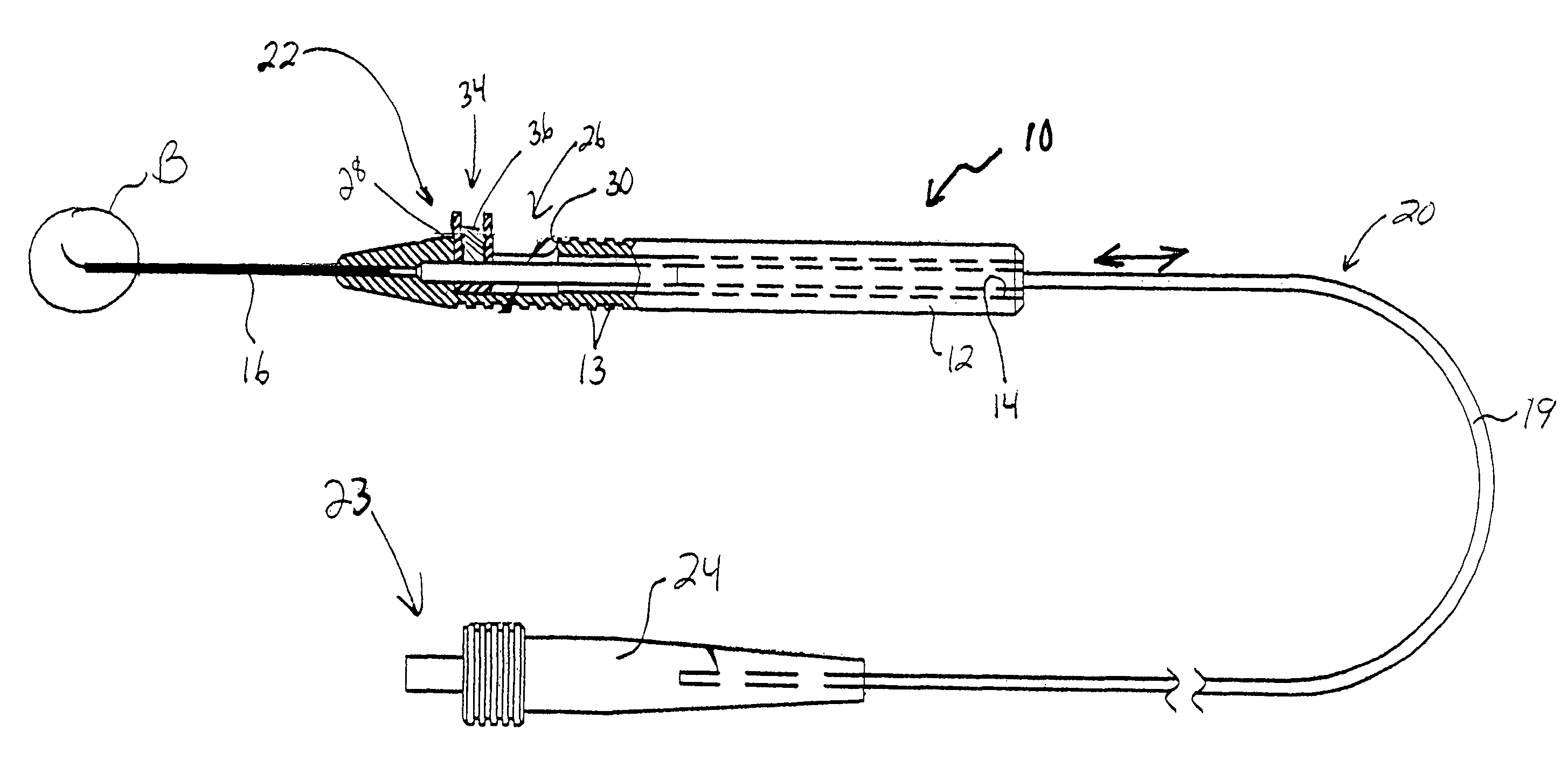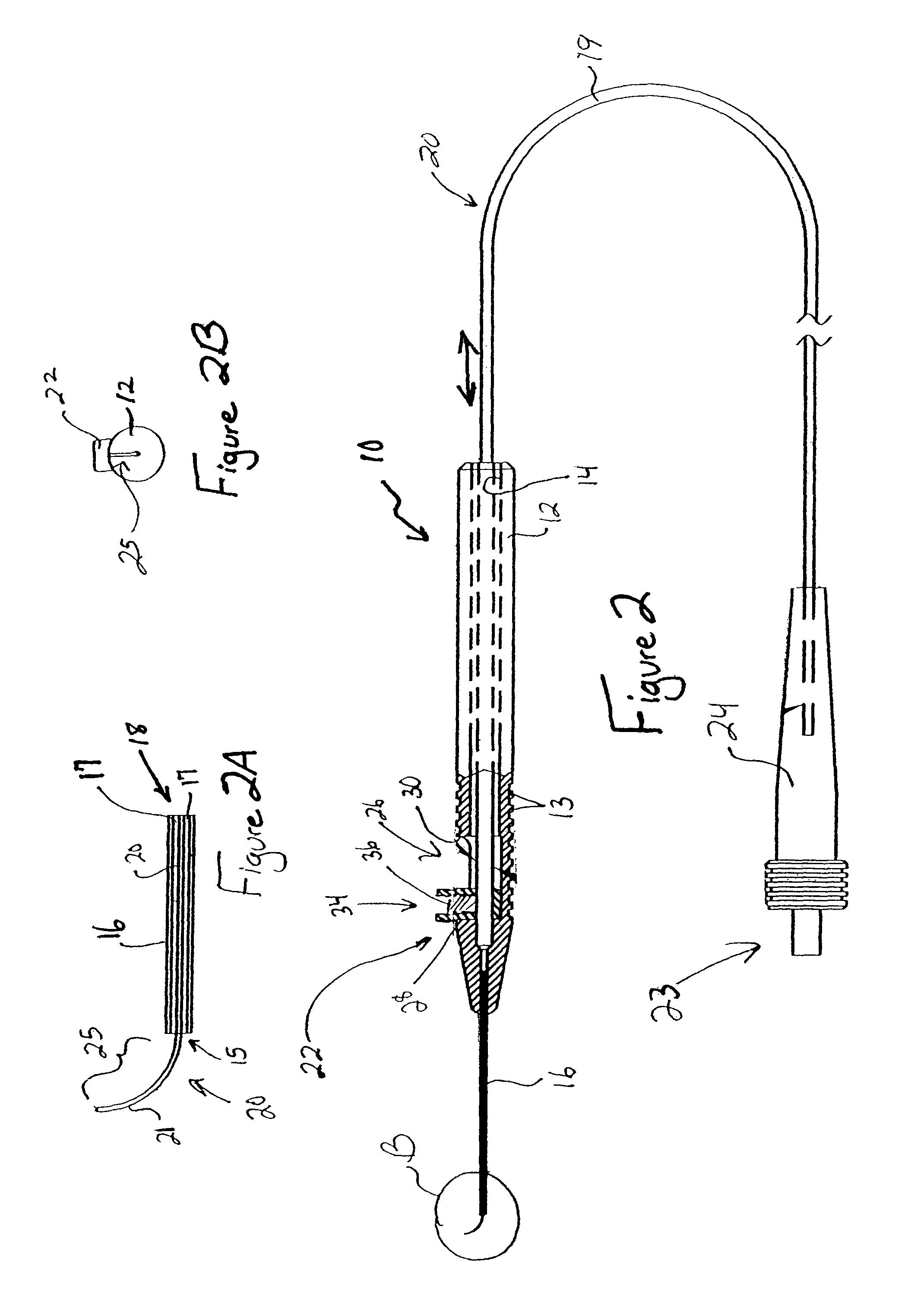Adjustable laser probe for use in vitreoretinal surgery
a laser probe and vitreoretinal technology, applied in the field of laser probes, can solve the problems of rigid cannulae, limited effectiveness of straight endoprobes, and inability to allow instruments
- Summary
- Abstract
- Description
- Claims
- Application Information
AI Technical Summary
Benefits of technology
Problems solved by technology
Method used
Image
Examples
Embodiment Construction
[0025]The present invention provides a laser probe providing adjustability between straight and curved configurations that eliminates disadvantages associated with the prior art. This laser probe improves the surgeon's ability to reach critical areas within the eye, provides for safer and intuitive surgical maneuverability, and allows for quick visual inspection to confirm proper probe orientation, before extension of the fiber to expose a curved tip.
[0026]The endo ocular laser probe of the present invention can function as both a straight and a curved laser probe. Referring now to FIG. 2, the probe 10 generally includes an elongated handpiece 12 and a rigid cannula 16 fixed to the handpiece 12 to prevent relative translational movement therebetween. An optical fiber 20 for delivering laser energy extends through channels in the handpiece 12 and cannula 16 and is supported for translational movement therein. A slidable button 22 is fixed to the optical fiber 20, such that the button...
PUM
 Login to View More
Login to View More Abstract
Description
Claims
Application Information
 Login to View More
Login to View More - R&D
- Intellectual Property
- Life Sciences
- Materials
- Tech Scout
- Unparalleled Data Quality
- Higher Quality Content
- 60% Fewer Hallucinations
Browse by: Latest US Patents, China's latest patents, Technical Efficacy Thesaurus, Application Domain, Technology Topic, Popular Technical Reports.
© 2025 PatSnap. All rights reserved.Legal|Privacy policy|Modern Slavery Act Transparency Statement|Sitemap|About US| Contact US: help@patsnap.com



